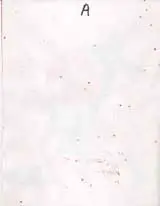|
Why We Desperately Need To Pattern Shotguns If we don't take the time to pattern our shotguns, we are shooting (and hunting) essentially blind, a very tough hoe to row. Various wad makers claim "better" patterns, choke-sellers do the same, manufacturers of back-bored shotguns (really, just over-sized barrels for the most part) brag about it, and the benefits of lengthening forcing cones and the like tout "better" patterns as well. All have some potential, of course, but none alone is likely to change your world. What counts is pattern quality, and if the pattern does not improve with an ammo change, choke change, or other modifications, then it just doesn't. All too often we can find ourselves believing in a choke tube, wad, or forcing cone rather than patterning results. Patterns break clays and bag birds, not choke tube designations or forcing cones. So, it just makes good sense to learn what pattern we are throwing with specific loads in our own specific guns. To illustrate how surprising patterning results can be, I'd like to offer a few examples fired at 40 yard turkey targets, all using number five shot, from three different test guns. The guns and loads used were first, 1-1/2 oz. 2-3/4 inch B & P "Baby Magnums" out of a Browning B-80 12 gauge, with a fixed full choke. Second, a whopperdoodle 2 oz. Remington #P12XHM Premier Magnum Copper-Plated Buffered Turkey Load out of a Beretta A390 12 gauge, with the factory Beretta full choke. The third set-up I tested was the Federal Premium "Mag-Shock"1-5/16 oz. 20 ga. 3 inch Turkey Load #GST258, fired from a Beretta A303 20 gauge with a factory Beretta full choke. Given the above selection of guns and loads, what would you choose to pop a gobbler with? There is nothing in the literature that could possibly give you a clue. We might think that as fixed chokes can be better than screw chokes, the B-80 solid full choke barrel might do the best, with a chamber that matches the hull length to boot. Besides, 1-1/2 oz. of #5 shot is a healthy payload of shot, and more closely comports to the "square" and reputedly better patterning "square" height rather than the massive 2 oz. load. We might think that, "hey, more is more, and that shot has to go somewhere." Increasing the payload by a full one third, and adding copper plating and buffering has got to really help as well. The 2 oz. 3 inch Remington load has to be an excellent load with a full choke, so let's pick the Beretta A390 with the big boomer 2 oz. load. We would be sadly mistaken on all counts, which is why we need to pattern. The 1-1/2 oz 12 ga. load was easily the worst of the bunch, as shown by the backside of the target marked "A" below:
Aha! Well, the monster 2 oz. load, with all that cool buffering and copper-plated shot has to be the ticket, then. Not really. It might be considered marginally better, an extra pellet or two in the kill area, but no more on the 8-1/2 x 11 inch target. Let's take a look at target "B" to see:
The clear, easy winner with fully twice the number of kill zone hits, and over one third more pellets in the target altogether was the Federal 20 ga. load, out of the Beretta 303. This had the lightest payload and starting pellet count out of the bunch, 1-5/16 oz. vs. 1-1/2 oz. and 2 oz. respectively (load "C"):
You might think that the two 12 ga. guns were picked out because I knew they didn't pattern these loads well, but that wasn't the case! The testing continued, using a Browning Gold 12 ga. 3" chambered model, with factory "back-bored" barrel and factory Invector Plus full choke. The results were no better. In fact, they were even worse with the 1-1/2 oz. "Baby Magnums." A Belgium Browning A-5 20 Magnum with a factory fixed modified choke and the Federal 20 ga. turkey loads outperformed it. But wait, maybe a "turkey choke" is the answer? Well, we screwed on a Browning factory extended and ported, X-Tra Full Invector choke and still the Baby Mags performed poorly. Finally, we repeated our testing with the heavy 2 oz. buffered Remington loads, the Browning Gold 12, and the Invector Plus extended X-Tra Full choke. Finally, the 2 oz. boomer load came alive, and became comparable (actually slightly better) than our relatively demure 1-5/16 oz. Federal 20 ga. Beretta 303 combination. No two patterns are exactly the same, of course, and it takes five shots to establish a reasonable trend with each and every load. How will any or all of these loads perform in your gun? I haven't a clue, and that is why we desperately need to pattern our shotguns. |


